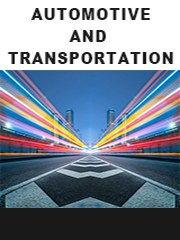Report overview
A low-speed vehicle (LSV) is a legal class of 4-wheel vehicles that have a maximum capable speed typically around 25 mph (40 km/h), and have a minimum capable speed (typically 20 mph (32 km/h)) that allows them to travel on public roads not accessible to all golf carts or neighborhood electric vehicles (NEV).
This report aims to provide a comprehensive presentation of the global market for Low Speed Vehicle, with both quantitative and qualitative analysis, to help readers develop business/growth strategies, assess the market competitive situation, analyze their position in the current marketplace, and make informed business decisions regarding Low Speed Vehicle. This report contains market size and forecasts of Low Speed Vehicle in global, including the following market information:
Global Low Speed Vehicle Market Revenue, 2018-2023, 2024-2029, ($ millions)
Global Low Speed Vehicle Market Sales, 2018-2023, 2024-2029, (K Units)
Global top five Low Speed Vehicle companies in 2022 (%)
The global Low Speed Vehicle market was valued at US$ 10230 million in 2022 and is projected to reach US$ 16420 million by 2029, at a CAGR of 7.0% during the forecast period. The influence of COVID-19 and the Russia-Ukraine War were considered while estimating market sizes.
Global Low Speed Vehicle key players include Byvin Corporation, Yogomo, Shifeng, Ingersoll Rand, Dojo, etc. Global top five manufacturers hold a share about 45%.
China is the largest market, with a share over 75%, followed by North America and Europe, both have a share about 20 percent.
In terms of product, Electric is the largest segment, with a share about 90%. And in terms of application, the largest application is Personal Use, followed by Public Utilities.
We surveyed the Low Speed Vehicle manufacturers, suppliers, distributors and industry experts on this industry, involving the sales, revenue, demand, price change, product type, recent development and plan, industry trends, drivers, challenges, obstacles, and potential risks.
Total Market by Segment:
Global Low Speed Vehicle Market, by Type, 2018-2023, 2024-2029 ($ Millions) & (K Units)
Global Low Speed Vehicle Market Segment Percentages, by Type, 2022 (%)
Electric
Diesel
Gasoline
Global Low Speed Vehicle Market, by Application, 2018-2023, 2024-2029 ($ Millions) & (K Units)
Global Low Speed Vehicle Market Segment Percentages, by Application, 2022 (%)
Personal Use
Public Utilities
Golf Cart
Sightseeing Cars
Others
Global Low Speed Vehicle Market, By Region and Country, 2018-2023, 2024-2029 ($ Millions) & (K Units)
Global Low Speed Vehicle Market Segment Percentages, By Region and Country, 2022 (%)
North America
US
Canada
Mexico
Europe
Germany
France
U.K.
Italy
Russia
Nordic Countries
Benelux
Rest of Europe
Asia
China
Japan
South Korea
Southeast Asia
India
Rest of Asia
South America
Brazil
Argentina
Rest of South America
Middle East & Africa
Turkey
Israel
Saudi Arabia
UAE
Rest of Middle East & Africa
Competitor Analysis
The report also provides analysis of leading market participants including:
Key companies Low Speed Vehicle revenues in global market, 2018-2023 (Estimated), ($ millions)
Key companies Low Speed Vehicle revenues share in global market, 2022 (%)
Key companies Low Speed Vehicle sales in global market, 2018-2023 (Estimated), (K Units)
Key companies Low Speed Vehicle sales share in global market, 2022 (%)
Further, the report presents profiles of competitors in the market, key players include:
Byvin Corporation
Yogomo
Shifeng
Ingersoll Rand
Dojo
Textron
Lichi
Polaris
Yamaha
GreenWheel EV
Xinyuzhou
Renault
Eagle
Tangjun
Outline of Major Chapters:
Chapter 1: Introduces the definition of Low Speed Vehicle, market overview.
Chapter 2: Global Low Speed Vehicle market size in revenue and volume.
Chapter 3: Detailed analysis of Low Speed Vehicle manufacturers competitive landscape, price, sales and revenue market share, latest development plan, merger, and acquisition information, etc.
Chapter 4: Provides the analysis of various market segments by type, covering the market size and development potential of each market segment, to help readers find the blue ocean market in different market segments.
Chapter 5: Provides the analysis of various market segments by application, covering the market size and development potential of each market segment, to help readers find the blue ocean market in different downstream markets.
Chapter 6: Sales of Low Speed Vehicle in regional level and country level. It provides a quantitative analysis of the market size and development potential of each region and its main countries and introduces the market development, future development prospects, market space of each country in the world.
Chapter 7: Provides profiles of key players, introducing the basic situation of the main companies in the market in detail, including product sales, revenue, price, gross margin, product introduction, recent development, etc.
Chapter 8: Global Low Speed Vehicle capacity by region & country.
Chapter 9: Introduces the market dynamics, latest developments of the market, the driving factors and restrictive factors of the market, the challenges and risks faced by manufacturers in the industry, and the analysis of relevant policies in the industry.
Chapter 10: Analysis of industrial chain, including the upstream and downstream of the industry.
Chapter 11: The main points and conclusions of the report.
